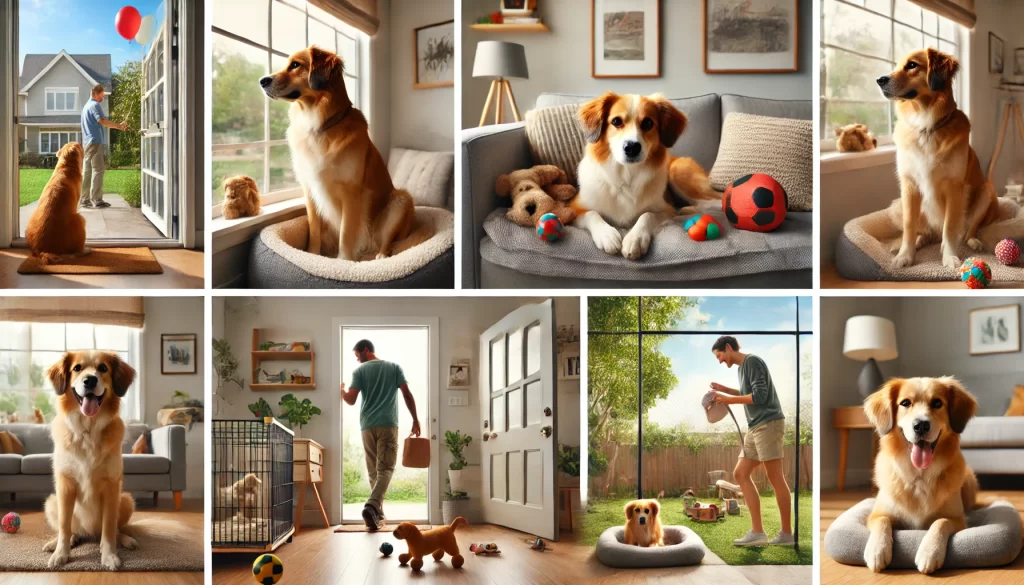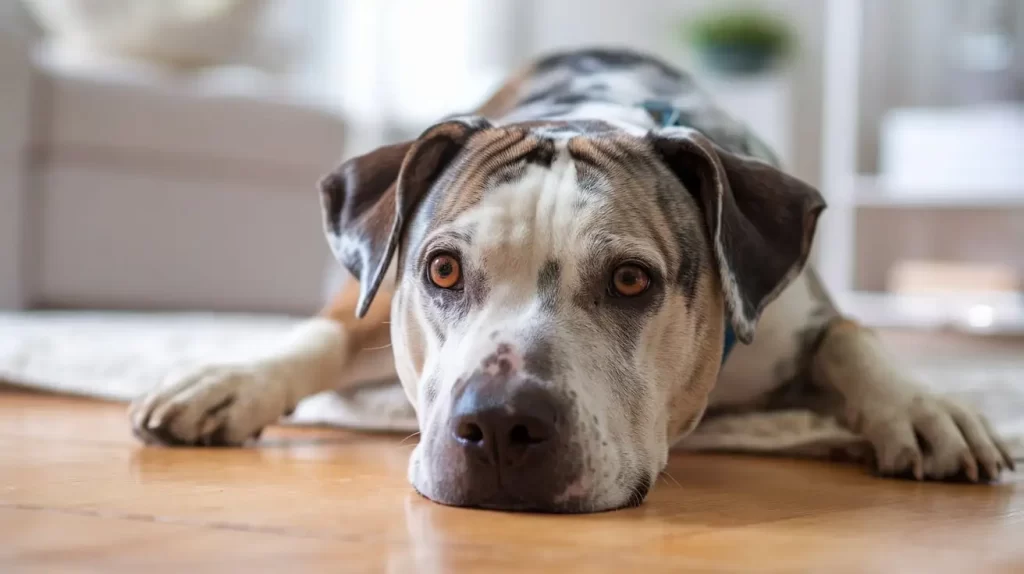Table of Contents
How Long Can You Leave Your Dog Alone? When you adopt a dog, they become a part of your family. But life can get busy, and many pet owners wonder, How Long Can You Leave Your Dog Alone? This question is more than just a passing thought; it’s critical for your dog’s well-being. Understanding How Long Can You Leave Your Dog Alone? is essential to ensuring their health and happiness. This article will dive into How Long Can You Leave Your Dog Alone? What affects their coping ability, and practical tips to keep them happy and healthy while you’re away.
How Long Can You Leave Your Dog Alone? Why Does the Time Matter?

Your dog is more than just a pet; it is a companion who relies on you. How long you can leave your dog alone directly impacts its mental and physical health. If left alone for too long, dogs can suffer from anxiety, boredom, and even physical discomfort. Knowing the right amount of time to leave your dog alone can help you provide a loving and safe environment.
Factors That Determine How Long You Can Leave Your Dog Alone
Your Dog’s Age
Age significantly affects how long your dog can handle being alone. Puppies, for example, need much more attention than adult dogs. A young puppy should not be left alone for more than 2-3 hours, requiring frequent potty breaks, feeding, and mental stimulation. Depending on the breed, adult dogs may be fine for 4-6 hours, but seniors may need more frequent supervision due to age-related conditions like arthritis or incontinence.
Your Dog’s Breed and Temperament
Some dog breeds are more independent than others. Breeds like Greyhounds and Basset Hounds are often content with lounging around for several hours, while breeds like Border Collies or Huskies, who are more energetic, need more interaction and exercise. Additionally, a dog’s temperament also affects how long you can leave them alone. Dogs with separation anxiety may struggle to be alone, even for short periods.
Your Dog’s Training Level
Dogs that are properly trained can handle more extended periods of solitude. Crate training, for instance, can help a dog feel secure when you’re not home. If your dog is used to being in a crate for short periods, they may handle being alone better. Similarly, house-trained dogs are less likely to feel stressed about having accidents if they’ve learned to wait for you to return home.
The Repercussions of Spending Too Much Time Alone with Your Dog

Mental and Emotional Stress
Dogs are social animals and crave companionship. Leaving them alone for too long can result in mental stress and emotional challenges like depression and anxiety. You may notice your dog becoming more withdrawn, refusing to eat, or developing behavioral issues like destructive chewing or excessive barking.
Physical Health Issues
If dogs are left alone with access to fresh water, proper food, or a comfortable resting space, their physical health can improve. Without access to clean water, they may develop bladder infections from holding it in too long or suffer from dehydration. Long-term neglect can lead to severe health issues that could have been avoided with proper care.
Signs Your Dog Has Been Alone Too Long
How can you tell me how long you can leave your dog alone? Before it becomes too long? Here are some common signs:
- Destructive behavior: Chewing on furniture, shoes, or anything they can find.
- Excessive barking or howling: Dogs may bark excessively due to boredom or anxiety.
- Bathroom accidents: Even house-trained dogs may have accidents if left for too long.
- Withdrawal or over-excitement: Some dogs may become overly clingy when you return, while others might seem distant.
If you notice any of these behaviors, it’s time to reconsider how long you’re leaving your dog alone and take steps to address their needs.
Tips to Help Your Dog Handle Being Alone
Set a Routine
Dogs thrive on routine. If you leave your dog alone regularly, establish a schedule they can predict. Feed them, walk them, and give them a chance to relieve themselves before you go. Consistent routines help reduce stress and anxiety.
Provide Mental Stimulation
Leaving your dog with interactive toys, like puzzle feeders or chew toys, can keep their minds active while you’re away. Mental stimulation prevents boredom and can reduce the likelihood of destructive behaviors.
Hire a Dog Walker or Use Doggy Daycare
If you know you’ll be gone for extended periods, hiring a dog walker or enrolling your dog in doggy daycare can help break up the day. This allows your dog to get the exercise and companionship it needs.
Set Up a Safe Space
Creating a safe, comfortable space for your dog can make being alone less stressful. You can use a crate, a designated room, or a playpen with their bed, toys, and water. This space will provide security and reduce anxiety.
How Long Can You Leave Your Dog Alone? General Guidelines
Here are general guidelines for How Long Can You Leave Your Dog Alone? Based on age and activity levels:
- Puppies (up to 6 months old): 2-3 hours at most. Puppies need frequent bathroom breaks and mental stimulation.
- Adult Dogs (1-7 years old): 4-6 hours, depending on breed, training, and individual needs.
- Senior Dogs (7+ years old): 2-4 hours. Due to age-related health concerns, seniors may require more frequent potty breaks and comfort.
While these are general recommendations, always consider your dog’s unique needs when planning how long to leave them alone.
What You Can Do If You Have to Be Away for Long Periods
Arrange for a Pet Sitter or Neighbor
If you know you’ll be away for an entire workday or longer, ask a trusted neighbor or hire a pet sitter to check in on your dog. Having someone come by for a short visit can break up your dog’s day and provide some much-needed companionship.
Also Read: Can You Look Up Divorce Records? Discover Shocking Secrets Now
Use Technology to Stay Connected
Modern technology offers creative ways to stay connected with your dog. Pet cameras, for instance, allow you to watch, talk to, and even dispense treats to your dog from a distance. This can help calm your dog and provide you peace of mind.
Plan Interactive Playtime When You Return
When you get home, make sure to give your dog extra attention. Take them for a long walk, play fetch, or give them belly rubs. This interaction reassures them that even though you leave, you’ll always return. How Long Can You Leave Your Dog Alone? Depends on various factors like age, breed, and temperament. Puppies need more attention, while adult dogs can handle more extended periods. However, How Long Can You Leave Your Dog Alone? is crucial because leaving a dog alone for too long can lead to mental, emotional, and physical problems.
Always provide your dog a loving and comfortable environment, even when you’re not around. Considering the general guidelines and using the tips will help you manage How Long Can You Leave Your Dog Alone? and ensure its well-being. By understanding these details, you’ll ensure your dog is happy, healthy, and safe, even when you need to be away, and know How Long Can You Leave Your Dog Alone? effectively.



